The "Crop Circles" that have enamored the present modern society on The Discovery Channel as there are many shows that have contemplated over the reason leaving the cause to mysterious. To adverb the pronoun as the sentence is on-going this is the arithmetic meeting geometry in word.
Each desire of shape has left the mystery in Cantore Mathematics to the Band of Holes in Peru as the outline to engage the event as the horizon to the solve. Any puzzle that pieces with the picture already showing is a pixel.
Now for the piece de resistance as conjecture to what is a whole as the picture is on the circular divide with both girth (equator) and ground (gravity). The P.S.I. (pounds per square inch) is the ruler jumping to physics to quickly as geometry would be lost to ground and gravity would be overlooked to the touch.
The basis of arithmetic is to meet the line with the equation? This basic outline is to point out to the in of mountain and not valley, rather the deep impact that has been broadcasted worldwide as a meteor layer showing U.F.O. as viable as the meteor seems to be the comment at the interjection (Vocabulary) of sentence to verb.
For Cantore Arithmetic the proof must lay to the reason as plus in word will not suffice in Cantore Sciences. The crater to the volcano.
Impact crater
| ||||
Impact craters in the Solar System:
|
An impact crater is an approximately circular depression in the surface of a planet, moon, or other solid body in the Solar System or elsewhere, formed by the hypervelocity impact of a smaller body. In contrast to volcanic craters, which result from explosion or internal collapse,[2] impact craters typically have raised rims and floors that are lower in elevation than the surrounding terrain.[3] Impact craters range from small, simple, bowl-shaped depressions to large, complex, multi-ringed impact basins. Meteor Crater is a well-known example of a small impact crater on Earth.
Impact craters are the dominant geographic features on many solid Solar System objects including the Moon, Mercury, Callisto, Ganymede and most small moons and asteroids. On other planets and moons that experience more active surface geological processes, such as Earth, Venus, Mars, Europa, Io and Titan, visible impact craters are less common because they become eroded, buried or transformed by tectonics over time. Where such processes have destroyed most of the original crater topography, the terms impact structure or astrobleme are more commonly used. In early literature, before the significance of impact cratering was widely recognised, the terms cryptoexplosion or cryptovolcanic structure were often used to describe what are now recognised as impact-related features on Earth.[4]
The cratering records of very old surfaces, such as Mercury, the Moon, and the southern highlands of Mars, record a period of intense early bombardment in the inner Solar System around 3.9 billion years ago. The rate of crater production on Earth has since been considerably lower, but it is appreciable nonetheless; Earth experiences from one to three impacts large enough to produce a 20-kilometre-diameter (12 mi) crater about once every million years on average.[5][6] This indicates that there should be far more relatively young craters on the planet than have been discovered so far. The cratering rate in the inner solar system fluctuates as a consequence of collisions in the asteroid belt that create a family of fragments that are often sent cascading into the inner solar system.[7] Formed in a collision 80 million years ago, the Baptistina family of asteroids is thought to have caused a large spike in the impact rate. Note that the rate of impact cratering in the outer Solar System could be different from the inner Solar System.[8]
Although Earth's active surface processes quickly destroy the impact record, about 190 terrestrial impact craters have been identified.[9] These range in diameter from a few tens of meters up to about 300 km (190 mi), and they range in age from recent times (e.g. the Sikhote-Alin craters in Russia whose creation was witnessed in 1947) to more than two billion years, though most are less than 500 million years old because geological processes tend to obliterate older craters. They are also selectively found in the stable interior regions of continents.[10] Few undersea craters have been discovered because of the difficulty of surveying the sea floor, the rapid rate of change of the ocean bottom, and the subduction of the ocean floor into Earth's interior by processes of plate tectonics.
Impact craters are not to be confused with landforms that may appear similar, including calderas, sinkholes, glacial cirques, ring dikes, salt domes, and others.
History
Daniel M. Barringer, a mining engineer, was convinced already in 1903 that the crater he owned, Meteor Crater, was of cosmic origin. Yet most geologists at the time assumed it formed as the result of a volcanic steam eruption.[11]: 41–42
In the 1920s, the American geologist Walter H. Bucher studied a number of sites now recognized as impact craters in the United States. He concluded they had been created by some great explosive event, but believed that this force was probably volcanic in origin. However, in 1936, the geologists John D. Boon and Claude C. Albritton Jr. revisited Bucher's studies and concluded that the craters that he studied were probably formed by impacts.[12]
Grove Karl Gilbert suggested in 1893 that the Moon's craters were formed by large asteroid impacts. Ralph Baldwin in 1949 wrote that the Moon's craters were mostly of impact origin. Around 1960, Gene Shoemaker revived the idea. According to David H. Levy, Gene "saw the craters on the Moon as logical impact sites that were formed not gradually, in eons, but explosively, in seconds." For his Ph.D. degree at Princeton (1960), under the guidance of Harry Hammond Hess, Shoemaker studied the impact dynamics of Barringer Meteor Crater. Shoemaker noted Meteor Crater had the same form and structure as two explosion craters created from atomic bomb tests at the Nevada Test Site, notably Jangle U in 1951 and Teapot Ess in 1955. In 1960, Edward C. T. Chao and Shoemaker identified coesite (a form of silicon dioxide) at Meteor Crater, proving the crater was formed from an impact generating extremely high temperatures and pressures. They followed this discovery with the identification of coesite within suevite at Nördlinger Ries, proving its impact origin.[11]
Armed with the knowledge of shock-metamorphic features, Carlyle S. Beals and colleagues at the Dominion Astrophysical Observatory in Victoria, British Columbia, Canada and Wolf von Engelhardt of the University of Tübingen in Germany began a methodical search for impact craters. By 1970, they had tentatively identified more than 50. Although their work was controversial, the American Apollo Moon landings, which were in progress at the time, provided supportive evidence by recognizing the rate of impact cratering on the Moon.[13] Because the processes of erosion on the Moon are minimal, craters persist. Since the Earth could be expected to have roughly the same cratering rate as the Moon, it became clear that the Earth had suffered far more impacts than could be seen by counting evident craters.
Crater formation
Impact cratering involves high velocity collisions between solid objects, typically much greater than the speed of sound in those objects. Such hyper-velocity impacts produce physical effects such as melting and vaporization that do not occur in familiar sub-sonic collisions. On Earth, ignoring the slowing effects of travel through the atmosphere, the lowest impact velocity with an object from space is equal to the gravitational escape velocity of about 11 km/s. The fastest impacts occur at about 72 km/s[14] in the "worst case" scenario in which an object in a retrograde near-parabolic orbit hits Earth. The median impact velocity on Earth is about 20 km/s.[15]
However, the slowing effects of travel through the atmosphere rapidly decelerate any potential impactor, especially in the lowest 12 kilometres where 90% of the earth's atmospheric mass lies. Meteorites of up to 7,000 kg lose all their cosmic velocity due to atmospheric drag at a certain altitude (retardation point), and start to accelerate again due to Earth's gravity until the body reaches its terminal velocity of 0.09 to 0.16 km/s.[14] The larger the meteoroid (i.e. asteroids and comets) the more of its initial cosmic velocity it preserves. While an object of 9,000 kg maintains about 6% of its original velocity, one of 900,000 kg already preserves about 70%. Extremely large bodies (about 100,000 tonnes) are not slowed by the atmosphere at all, and impact with their initial cosmic velocity if no prior disintegration occurs.[14]
Impacts at these high speeds produce shock waves in solid materials, and both impactor and the material impacted are rapidly compressed to high density. Following initial compression, the high-density, over-compressed region rapidly depressurizes, exploding violently, to set in train the sequence of events that produces the impact crater. Impact-crater formation is therefore more closely analogous to cratering by high explosives than by mechanical displacement. Indeed, the energy density of some material involved in the formation of impact craters is many times higher than that generated by high explosives. Since craters are caused by explosions, they are nearly always circular – only very low-angle impacts cause significantly elliptical craters.[16]
This describes impacts on solid surfaces. Impacts on porous surfaces, such as that of Hyperion, may produce internal compression without ejecta, punching a hole in the surface without filling in nearby craters. This may explain the 'sponge-like' appearance of that moon.[17]
It is convenient to divide the impact process conceptually into three distinct stages: (1) initial contact and compression, (2) excavation, (3) modification and collapse. In practice, there is overlap between the three processes with, for example, the excavation of the crater continuing in some regions while modification and collapse is already underway in others.
Contact and compression
In the absence of atmosphere, the impact process begins when the impactor first touches the target surface. This contact accelerates the target and decelerates the impactor. Because the impactor is moving so rapidly, the rear of the object moves a significant distance during the short-but-finite time taken for the deceleration to propagate across the impactor. As a result, the impactor is compressed, its density rises, and the pressure within it increases dramatically. Peak pressures in large impacts exceed 1 TPa to reach values more usually found deep in the interiors of planets, or generated artificially in nuclear explosions.
In physical terms, a shock wave originates from the point of contact. As this shock wave expands, it decelerates and compresses the impactor, and it accelerates and compresses the target. Stress levels within the shock wave far exceed the strength of solid materials; consequently, both the impactor and the target close to the impact site are irreversibly damaged. Many crystalline minerals can be transformed into higher-density phases by shock waves; for example, the common mineral quartz can be transformed into the higher-pressure forms coesite and stishovite. Many other shock-related changes take place within both impactor and target as the shock wave passes through, and some of these changes can be used as diagnostic tools to determine whether particular geological features were produced by impact cratering.[16]
As the shock wave decays, the shocked region decompresses towards more usual pressures and densities. The damage produced by the shock wave raises the temperature of the material. In all but the smallest impacts this increase in temperature is sufficient to melt the impactor, and in larger impacts to vaporize most of it and to melt large volumes of the target. As well as being heated, the target near the impact is accelerated by the shock wave, and it continues moving away from the impact behind the decaying shock wave.[16]
Excavation
Contact, compression, decompression, and the passage of the shock wave all occur within a few tenths of a second for a large impact. The subsequent excavation of the crater occurs more slowly, and during this stage the flow of material is largely subsonic. During excavation, the crater grows as the accelerated target material moves away from the point of impact. The target's motion is initially downwards and outwards, but it becomes outwards and upwards. The flow initially produces an approximately hemispherical cavity that continues to grow, eventually producing a paraboloid (bowl-shaped) crater in which the centre has been pushed down, a significant volume of material has been ejected, and a topographically elevated crater rim has been pushed up. When this cavity has reached its maximum size, it is called the transient cavity.[16]
The depth of the transient cavity is typically a quarter to a third of its diameter. Ejecta thrown out of the crater do not include material excavated from the full depth of the transient cavity; typically the depth of maximum excavation is only about a third of the total depth. As a result, about one third of the volume of the transient crater is formed by the ejection of material, and the remaining two thirds is formed by the displacement of material downwards, outwards and upwards, to form the elevated rim. For impacts into highly porous materials, a significant crater volume may also be formed by the permanent compaction of the pore space. Such compaction craters may be important on many asteroids, comets and small moons.
In large impacts, as well as material displaced and ejected to form the crater, significant volumes of target material may be melted and vaporized together with the original impactor. Some of this impact melt rock may be ejected, but most of it remains within the transient crater, initially forming a layer of impact melt coating the interior of the transient cavity. In contrast, the hot dense vaporized material expands rapidly out of the growing cavity, carrying some solid and molten material within it as it does so. As this hot vapor cloud expands, it rises and cools much like the archetypal mushroom cloud generated by large nuclear explosions. In large impacts, the expanding vapor cloud may rise to many times the scale height of the atmosphere, effectively expanding into free space.
Most material ejected from the crater is deposited within a few crater radii, but a small fraction may travel large distances at high velocity, and in large impacts it may exceed escape velocity and leave the impacted planet or moon entirely. The majority of the fastest material is ejected from close to the center of impact, and the slowest material is ejected close to the rim at low velocities to form an overturned coherent flap of ejecta immediately outside the rim. As ejecta escapes from the growing crater, it forms an expanding curtain in the shape of an inverted cone. The trajectory of individual particles within the curtain is thought to be largely ballistic.
Small volumes of un-melted and relatively un-shocked material may be spalled at very high relative velocities from the surface of the target and from the rear of the impactor. Spalling provides a potential mechanism whereby material may be ejected into inter-planetary space largely undamaged, and whereby small volumes of the impactor may be preserved undamaged even in large impacts. Small volumes of high-speed material may also be generated early in the impact by jetting. This occurs when two surfaces converge rapidly and obliquely at a small angle, and high-temperature highly shocked material is expelled from the convergence zone with velocities that may be several times larger than the impact velocity.
Modification and collapse
In most circumstances, the transient cavity is not stable and collapses under gravity. In small craters, less than about 4 km diameter on Earth, there is some limited collapse of the crater rim coupled with debris sliding down the crater walls and drainage of impact melts into the deeper cavity. The resultant structure is called a simple crater, and it remains bowl-shaped and superficially similar to the transient crater. In simple craters, the original excavation cavity is overlain by a lens of collapse breccia, ejecta and melt rock, and a portion of the central crater floor may sometimes be flat.
Above a certain threshold size, which varies with planetary gravity, the collapse and modification of the transient cavity is much more extensive, and the resulting structure is called a complex crater. The collapse of the transient cavity is driven by gravity, and involves both the uplift of the central region and the inward collapse of the rim. The central uplift is not the result of elastic rebound, which is a process in which a material with elastic strength attempts to return to its original geometry; rather the collapse is a process in which a material with little or no strength attempts to return to a state of gravitational equilibrium.
Complex craters have uplifted centers, and they have typically broad flat shallow crater floors, and terraced walls. At the largest sizes, one or more exterior or interior rings may appear, and the structure may be labeled an impact basin rather than an impact crater. Complex-crater morphology on rocky planets appears to follow a regular sequence with increasing size: small complex craters with a central topographic peak are called central peak craters, for example Tycho; intermediate-sized craters, in which the central peak is replaced by a ring of peaks, are called peak-ring craters, for example Schrödinger; and the largest craters contain multiple concentric topographic rings, and are called multi-ringed basins, for example Orientale. On icy (as opposed to rocky) bodies, other morphological forms appear that may have central pits rather than central peaks, and at the largest sizes may contain many concentric rings. Valhalla on Callisto is an example of this type.
Identifying impact craters
Non-explosive volcanic craters can usually be distinguished from impact craters by their irregular shape and the association of volcanic flows and other volcanic materials. Impact craters produce melted rocks as well, but usually in smaller volumes with different characteristics.[4]
The distinctive mark of an impact crater is the presence of rock that has undergone shock-metamorphic effects, such as shatter cones, melted rocks, and crystal deformations. The problem is that these materials tend to be deeply buried, at least for simple craters. They tend to be revealed in the uplifted center of a complex crater, however.[19][20]
Impacts produce distinctive shock-metamorphic effects that allow impact sites to be distinctively identified. Such shock-metamorphic effects can include:
- A layer of shattered or "brecciated" rock under the floor of the crater. This layer is called a "breccia lens".[21]
- Shatter cones, which are chevron-shaped impressions in rocks.[22] Such cones are formed most easily in fine-grained rocks.
- High-temperature rock types, including laminated and welded blocks of sand, spherulites and tektites, or glassy spatters of molten rock. The impact origin of tektites has been questioned by some researchers; they have observed some volcanic features in tektites not found in impactites. Tektites are also drier (contain less water) than typical impactites. While rocks melted by the impact resemble volcanic rocks, they incorporate unmelted fragments of bedrock, form unusually large and unbroken fields, and have a much more mixed chemical composition than volcanic materials spewed up from within the Earth. They also may have relatively large amounts of trace elements that are associated with meteorites, such as nickel, platinum, iridium, and cobalt. Note: scientific literature has reported that some "shock" features, such as small shatter cones, which are often associated only with impact events, have been found also in terrestrial volcanic ejecta.[23]
- Microscopic pressure deformations of minerals.[24] These include fracture patterns in crystals of quartz and feldspar, and formation of high-pressure materials such as diamond, derived from graphite and other carbon compounds, or stishovite and coesite, varieties of shocked quartz.
- Buried craters, such as the Decorah crater, can be identified through drill coring, aerial electromagnetic resistivity imaging, and airborne gravity gradiometry.[25]
Economic importance of impacts
On Earth impact craters have resulted in useful minerals. Some of the ores produced from impact related effects on Earth include ores of iron, uranium, gold, copper, and nickel. It is estimated that the value of materials mined from impact structures is five billion dollars/year just for North America.[26] The eventual usefulness of impact craters depends on several factors especially the nature of the materials that were impacted and when the materials were affected. In some cases the deposits were already in place and the impact brought them to the surface. These are called “progenetic economic deposits.” Others were created during the actual impact. The great energy involved caused melting. Useful minerals formed as a result of this energy are classified as “syngenetic deposits.” The third type, called “epigenetic deposits,” is caused by the creation of a basin from the impact. Many of the minerals that our modern lives depend on are associated with impacts in the past. The Vredeford Dome in the center of the Witwatersrand Basin is the largest goldfield in the world which has supplied about 40% of all the gold ever mined in an impact structure (though the gold did not come from the bolide).[27][28][29][30] The asteroid that struck the region was 9.7 km (6 mi) wide. The Sudbury Basin was caused by an impacting body over 9.7 km (6 mi) in diameter.[31][32] This basin is famous for its deposits of nickel, copper, and Platinum Group Elements. An impact was involved in making the Carswell structure in Saskatchewan, Canada; it contains uranium deposits.[33][34][35] Hydrocarbons are common around impact structures. Fifty percent of impact structures in North America in hydrocarbon-bearing sedimentary basins contain oil/gas fields.[36][26]
Martian craters
Because of the many missions studying Mars since the 1960s, there is good coverage of its surface which contains large numbers of craters. Many of the craters on Mars differ from those on the Moon and other moons since Mars contains ice under the ground, especially in the higher latitudes. Some of the types of craters that have special shapes due to impact into ice-rich ground are pedestal craters, rampart craters, expanded craters, and LARLE craters.
Lists of craters
- List of impact craters on Earth
- List of possible impact structures on Earth
- List of craters on Mercury
- List of craters on the Moon
- List of craters on Mars
- List of craters on Venus
- List of geological features on Phobos
- List of craters on Europa
- List of craters on Ganymede
- List of craters on Callisto
- List of geological features on Mimas
- List of geological features on Enceladus
- List of geological features on Tethys
- List of geological features on Dione
- List of geological features on Rhea
- List of geological features on Iapetus
- List of geological features on Puck
- List of geological features on Miranda
- List of geological features on Ariel
- List of craters on Umbriel
- List of geological features on Titania
- List of geological features on Oberon
- List of craters on Triton
Impact craters on Earth
On Earth, the recognition of impact craters is a branch of geology, and is related to planetary geology in the study of other worlds. Out of many proposed craters, relatively few are confirmed. The following twenty are a sample of articles of confirmed and well-documented impact sites.
- Barringer Crater, a.k.a. Meteor Crater (Arizona, United States)
- Chesapeake Bay impact crater (Virginia, United States)
- Chicxulub, Extinction Event Crater (Mexico)
- Clearwater Lakes (Quebec, Canada)
- Gosses Bluff crater (Northern Territory, Australia)
- Haughton impact crater (Nunavut, Canada)
- Kaali crater (Estonia)
- Karakul crater (Tajikistan)
- Lonar crater (India)
- Manicouagan crater (Quebec, Canada)
- Manson crater (Iowa, United States)
- Mistastin crater (Labrador, Canada)
- Nördlinger Ries (Germany)
- Pingualuit crater (Quebec, Canada)
- Popigai crater, (Siberia, Russia)
- Shoemaker crater (Western Australia, Australia)
- Siljan Ring (Sweden)
- Sudbury Basin (Ontario, Canada)
- Vredefort crater (South Africa)
- Wolfe Creek Crater (Western Australia, Australia)
See the Earth Impact Database,[37] a website concerned with 190 (as of July 2019) scientifically-confirmed impact craters on Earth.
Some extraterrestrial craters
- Caloris Basin (Mercury)
- Hellas Basin (Mars)
- Herschel crater (Mimas)
- Mare Orientale (Moon)
- Petrarch crater (Mercury)
- South Pole – Aitken basin (Moon)
Largest named craters in the Solar System
- North Polar Basin/Borealis Basin (disputed) – Mars – Diameter: 10,600 km
- South Pole-Aitken basin – Moon – Diameter: 2,500 km
- Hellas Basin – Mars – Diameter: 2,100 km
- Caloris Basin – Mercury – Diameter: 1,550 km
- Imbrium Basin – Moon – Diameter: 1,100 km
- Isidis Planitia – Mars – Diameter: 1,100 km
- Mare Tranquilitatis – Moon – Diameter: 870 km
- Argyre Planitia – Mars – Diameter: 800 km
- Rembrandt – Mercury – Diameter: 715 km
- Serenitatis Basin – Moon – Diameter: 700 km
- Mare Nubium – Moon – Diameter: 700 km
- Beethoven – Mercury – Diameter: 625 km
- Valhalla – Callisto – Diameter: 600 km, with rings to 4,000 km diameter
- Hertzsprung – Moon – Diameter: 590 km
- Turgis – Iapetus – Diameter: 580 km
- Apollo – Moon – Diameter: 540 km
- Engelier – Iapetus – Diameter: 504 km
- Mamaldi – Rhea – Diameter: 480 km
- Huygens – Mars – Diameter: 470 km
- Schiaparelli – Mars – Diameter: 470 km
- Rheasilvia – 4 Vesta – Diameter: 460 km
- Gerin – Iapetus – Diameter: 445 km
- Odysseus – Tethys – Diameter: 445 km
- Korolev – Moon – Diameter: 430 km
- Falsaron – Iapetus – Diameter: 424 km
- Dostoevskij – Mercury – Diameter: 400 km
- Menrva – Titan – Diameter: 392 km
- Tolstoj – Mercury – Diameter: 390 km
- Goethe – Mercury – Diameter: 380 km
- Malprimis – Iapetus – Diameter: 377 km
- Tirawa – Rhea – Diameter: 360 km
- Orientale Basin – Moon – Diameter: 350 km, with rings to 930 km diameter
- Evander – Dione – Diameter: 350 km
- Epigeus – Ganymede – Diameter: 343 km
- Gertrude – Titania – Diameter: 326 km
- Telemus – Tethys – Diameter: 320 km
- Asgard – Callisto – Diameter: 300 km, with rings to 1,400 km diameter
- Vredefort crater – Earth – Diameter: 300 km
- Kerwan – Ceres – Diameter: 284 km
- Powehiwehi – Rhea – Diameter: 271 km
There are approximately twelve more impact craters/basins larger than 300 km on the Moon, five on Mercury, and four on Mars.[38] Large basins, some unnamed but mostly smaller than 300 km, can also be found on Saturn's moons Dione, Rhea and Iapetus.
See also
- Cretaceous–Paleogene extinction event – Mass extinction event about 66 million years ago
- Crater illusion – Optical illusion
- Expanded crater
- Impact depth – Depth of projectile penetration
- Impact event – Collision of two astronomical objects with measurable effects
- Lakes on Mars – Overview of the presence of lakes on Mars
- LARLE crater
- Nemesis (hypothetical star) – Hypothetical star orbiting the Sun, responsible for extinction events
- Panspermia – Hypothesis on the interstellar spreading of primordial life
- Pedestal crater
- Peter H. Schultz
- Rampart crater – Specific type of impact crater
- Ray system
- Secondary crater
- Traces of Catastrophe – Book by Bevan M. French, 1998 book from Lunar and Planetary Institute – comprehensive reference on impact crater science
References
- "Planetary Names: Welcome". planetarynames.wr.usgs.gov.
Bibliography
- Baier, Johannes (2007). Die Auswurfprodukte des Ries-Impakts, Deutschland. Documenta Naturae. 162. Verlag. ISBN 978-3-86544-162-1.
- Bond, J. W. (December 1981). "The development of central peaks in lunar craters". The Moon and the Planets. 25 (4): 465–476. Bibcode:1981M&P....25..465B. doi:10.1007/BF00919080. S2CID 120197487.
- Melosh, H. J. (1989). Impact Cratering: A Geologic Process. Oxford Monographs on Geology and Geophysics. 11. Oxford University Press. Bibcode:1989icgp.book.....M. ISBN 978-0-19-510463-9.
- Randall, Lisa (2015). Dark Matter and the Dinosaurs. New York: Ecco/HarperCollins Publishers. ISBN 978-0-06-232847-2.
- Wood, Charles A.; Andersson, Leif (1978). New Morphometric Data for Fresh Lunar Craters. 9th Lunar and Planetary Science Conference. 13–17 March 1978. Houston, Texas. Bibcode:1978LPSC....9.3669W.
Further reading
- Mark, Kathleen (1987). Meteorite Craters. Tucson: University of Arizona Press. Bibcode:1987mecr.book.....M. ISBN 978-0-8165-0902-7.
External links
 Media related to Impact craters at Wikimedia Commons
Media related to Impact craters at Wikimedia Commons- The Geological Survey of Canada Crater database, 172 impact structures
- Aerial Explorations of Terrestrial Meteorite Craters
- Impact Meteor Crater Viewer Google Maps Page with Locations of Meteor Craters around the world
- Solarviews: Terrestrial Impact Craters
- Lunar and Planetary Institute slidshow: contains pictures
Volcano
A volcano is a rupture in the crust of a planetary-mass object, such as Earth, that allows hot lava, volcanic ash, and gases to escape from a magma chamber below the surface.
On Earth, volcanoes are most often found where tectonic plates are diverging or converging, and most are found underwater. For example, a mid-ocean ridge, such as the Mid-Atlantic Ridge, has volcanoes caused by divergent tectonic plates whereas the Pacific Ring of Fire has volcanoes caused by convergent tectonic plates. Volcanoes can also form where there is stretching and thinning of the crust's plates, such as in the East African Rift and the Wells Gray-Clearwater volcanic field and Rio Grande Rift in North America. Volcanism away from plate boundaries has been postulated to arise from upwelling diapirs from the core–mantle boundary, 3,000 kilometers (1,900 mi) deep in the Earth. This results in hotspot volcanism, of which the Hawaiian hotspot is an example. Volcanoes are usually not created where two tectonic plates slide past one another.
Large eruptions can affect atmospheric temperature as ash and droplets of sulfuric acid obscure the Sun and cool the Earth's troposphere. Historically, large volcanic eruptions have been followed by volcanic winters which have caused catastrophic famines.
Etymology
The word volcano is derived from the name of Vulcano, a volcanic island in the Aeolian Islands of Italy whose name in turn comes from Vulcan, the god of fire in Roman mythology.[1] The study of volcanoes is called volcanology, sometimes spelled vulcanology.[2]
Plate tectonics
According to the theory of plate tectonics, Earth's lithosphere, its rigid outer shell, is broken into sixteen larger and several smaller plates. These are in slow motion, due to convection in the underlying ductile mantle, and most volcanic activity on Earth takes place along plate boundaries, where plates are converging (and lithosphere is being destroyed) or are diverging (and new lithosphere is being created).[3]
Divergent plate boundaries
At the mid-ocean ridges, two tectonic plates diverge from one another as hot mantle rock creeps upwards beneath the thinned oceanic crust. The decrease of pressure in the rising mantle rock leads to adiabatic expansion and the partial melting of the rock, causing volcanism and creating new oceanic crust. Most divergent plate boundaries are at the bottom of the oceans, and so most volcanic activity on the Earth is submarine, forming new seafloor. Black smokers (also known as deep sea vents) are evidence of this kind of volcanic activity. Where the mid-oceanic ridge is above sea level, volcanic islands are formed, such as Iceland.[4]
Convergent plate boundaries
Subduction zones are places where two plates, usually an oceanic plate and a continental plate, collide. The oceanic plate subducts (dives beneath the continental plate), forming a deep ocean trench just offshore. In a process called flux melting, water released from the subducting plate lowers the melting temperature of the overlying mantle wedge, thus creating magma. This magma tends to be extremely viscous because of its high silica content, so it often does not reach the surface but cools and solidifies at depth. When it does reach the surface, however, a volcano is formed. Thus subduction zones are bordered by chains of volcanoes called volcanic arcs. Typical examples are the volcanoes in the Pacific Ring of Fire, such as the Cascade Volcanoes or the Japanese Archipelago, or the Sunda Arc of Indonesia.[5]
Hotspots
Hotspots are volcanic areas thought to be formed by mantle plumes, which are hypothesized to be columns of hot material rising from the core-mantle boundary. As with mid-ocean ridges, the rising mantle rock experiences decompression melting which generates large volumes of magma. Because tectonic plates move across mantle plumes, each volcano becomes inactive as it drifts off the plume, and new volcanoes are created where the plate advances over the plume. The Hawaiian Islands are thought to have been formed in such a manner, as has the Snake River Plain, with the Yellowstone Caldera being the part of the North American plate currently above the Yellowstone hotspot.[6] However, the mantle plume hypothesis has been questioned.[7]
Continental rifting
Sustained upwelling of hot mantle rock can develop under the interior of a continent and lead to rifting. Early stages of rifting are characterized by flood basalts and may progress to the point where a tectonic plate is completely split.[8][9] A divergent plate boundary then develops between the two halves of the split plate. However, rifting often fails to completely split the continental lithosphere (such as in an aulacogen), and failed rifts are characterized by volcanoes that erupt unusual alkali lava or carbonatites. Examples include the volcanoes of the East African Rift.[10]
Volcanic features
The most common perception of a volcano is of a conical mountain, spewing lava and poisonous gases from a crater at its summit; however, this describes just one of the many types of volcano. The features of volcanoes are much more complicated and their structure and behavior depends on a number of factors. Some volcanoes have rugged peaks formed by lava domes rather than a summit crater while others have landscape features such as massive plateaus. Vents that issue volcanic material (including lava and ash) and gases (mainly steam and magmatic gases) can develop anywhere on the landform and may give rise to smaller cones such as Puʻu ʻŌʻō on a flank of Hawaii's Kīlauea. Other types of volcano include cryovolcanoes (or ice volcanoes), particularly on some moons of Jupiter, Saturn, and Neptune; and mud volcanoes, which are formations often not associated with known magmatic activity. Active mud volcanoes tend to involve temperatures much lower than those of igneous volcanoes except when the mud volcano is actually a vent of an igneous volcano.
Fissure vents
Volcanic fissure vents are flat, linear fractures through which lava emerges.
Shield volcanoes
Shield volcanoes, so named for their broad, shield-like profiles, are formed by the eruption of low-viscosity lava that can flow a great distance from a vent. They generally do not explode catastrophically, but are characterized by relatively gentle effusive eruptions. Since low-viscosity magma is typically low in silica, shield volcanoes are more common in oceanic than continental settings. The Hawaiian volcanic chain is a series of shield cones, and they are common in Iceland, as well.
Lava domes
Lava domes are built by slow eruptions of highly viscous lava. They are sometimes formed within the crater of a previous volcanic eruption, as in the case of Mount St. Helens, but can also form independently, as in the case of Lassen Peak. Like stratovolcanoes, they can produce violent, explosive eruptions, but the lava generally does not flow far from the originating vent.
Cryptodomes
Cryptodomes are formed when viscous lava is forced upward causing the surface to bulge. The 1980 eruption of Mount St. Helens was an example; lava beneath the surface of the mountain created an upward bulge, which later collapsed down the north side of the mountain.
Cinder cones
Cinder cones result from eruptions of mostly small pieces of scoria and pyroclastics (both resemble cinders, hence the name of this volcano type) that build up around the vent. These can be relatively short-lived eruptions that produce a cone-shaped hill perhaps 30 to 400 meters (100 to 1,300 ft) high. Most cinder cones erupt only once. Cinder cones may form as flank vents on larger volcanoes, or occur on their own. Parícutin in Mexico and Sunset Crater in Arizona are examples of cinder cones. In New Mexico, Caja del Rio is a volcanic field of over 60 cinder cones.
Based on satellite images, it was suggested that cinder cones might occur on other terrestrial bodies in the Solar system too; on the surface of Mars and the Moon.[11][12][13][14]
Stratovolcanoes (composite volcanoes)
- Large magma chamber
- Bedrock
- Conduit (pipe)
- Base
- Sill
- Dike
- Layers of ash emitted by the volcano
- Flank
- Layers of lava emitted by the volcano
- Throat
- Parasitic cone
- Lava flow
- Vent
- Crater
- Ash cloud
Stratovolcanoes (composite volcanoes) are tall conical mountains composed of lava flows and tephra in alternate layers, the strata that gives rise to the name. They are also known as composite volcanoes because they are created from multiple structures during different kinds of eruptions. Classic examples include Mount Fuji in Japan, Mayon Volcano in the Philippines, and Mount Vesuvius and Stromboli in Italy.
Ash produced by the explosive eruption of stratovolcanoes has historically posed the greatest volcanic hazard to civilizations. The lavas of stratovolcanoes are higher in silica, and therefore much more viscous, than lavas from shield volcanoes. High-silica lavas also tend to contain more dissolved gas. The combination is deadly, promoting explosive eruptions that produce great quantities of ash, as well as pyroclastic surges like the one that destroyed the city of Saint-Pierre in Martinique in 1902. They are also steeper than shield volcanoes, with slopes of 30–35° compared to slopes of generally 5–10°, and their loose tephra are material for dangerous lahars.[15] Large pieces of tephra are called volcanic bombs. Big bombs can measure more than 4 feet(1.2 meters) across and weigh several tons.[16]
Supervolcanoes
A supervolcano is a volcano that has experienced one or more eruptions that produced over 1,000 cubic kilometers (240 cu mi) of volcanic deposits in a single explosive event.[17] Such eruptions occur when a very large magma chamber full of gas-rich, silicic magma is emptied in a catastrophic caldera-forming eruption. Ash flow tuffs emplaced by such eruptions are the only volcanic product with volumes rivaling those of flood basalts.[18]
A supervolcano can produce devastation on a continental scale. Such volcanoes are able to severely cool global temperatures for many years after the eruption due to the huge volumes of sulfur and ash released into the atmosphere. They are the most dangerous type of volcano. Examples include Yellowstone Caldera in Yellowstone National Park and Valles Caldera in New Mexico (both western United States); Lake Taupō in New Zealand; Lake Toba in Sumatra, Indonesia; and Ngorongoro Crater in Tanzania. Fortunately, supervolcano eruptions are very rare events, though because of the enormous area they cover, and subsequent concealment under vegetation and glacial deposits, supervolcanoes can be difficult to identify in the geologic record without careful geologic mapping.[19]
Submarine volcanoes
Submarine volcanoes are common features of the ocean floor. Volcanic activity during the Holocene Epoch has been documented at only 119 submarine volcanoes. but there may be more than one million geologically young submarine volcanoes on the ocean floor.[20][21] In shallow water, active volcanoes disclose their presence by blasting steam and rocky debris high above the ocean's surface. In the deep ocean basins, the tremendous weight of the water prevents the explosive release of steam and gases; however, submarine eruptions can be detected by hydrophones and by the discoloration of water because of volcanic gases. Pillow lava is a common eruptive product of submarine volcanoes and is characterized by thick sequences of discontinuous pillow-shaped masses which form under water. Even large submarine eruptions may not disturb the ocean surface, due to the rapid cooling effect and increased buoyancy in water (as compared to air), which often causes volcanic vents to form steep pillars on the ocean floor. Hydrothermal vents are common near these volcanoes, and some support peculiar ecosystems based on chemotrophs feeding on dissolved minerals. Over time, the formations created by submarine volcanoes may become so large that they break the ocean surface as new islands or floating pumice rafts.
In May and June 2018, a multitude of seismic signals were detected by earthquake monitoring agencies all over the world. They took the form of unusual humming sounds, and some of the signals detected in November of that year had a duration of up to 20 minutes. An oceanographic research campaign in May 2019 showed that the previously mysterious humming noises were caused by the formation of a submarine volcano off the coast of Mayotte.[22]
Subglacial volcanoes
Subglacial volcanoes develop underneath icecaps. They are made up of lava plateaus capping extensive pillow lavas and palagonite. These volcanoes are also called table mountains, tuyas,[23] or (in Iceland) mobergs.[24] Very good examples of this type of volcano can be seen in Iceland and in British Columbia. The origin of the term comes from Tuya Butte, which is one of the several tuyas in the area of the Tuya River and Tuya Range in northern British Columbia. Tuya Butte was the first such landform analyzed and so its name has entered the geological literature for this kind of volcanic formation.[25] The Tuya Mountains Provincial Park was recently established to protect this unusual landscape, which lies north of Tuya Lake and south of the Jennings River near the boundary with the Yukon Territory.
Mud volcanoes
Mud volcanoes (mud domes) are formations created by geo-excreted liquids and gases, although there are several processes which may cause such activity.[26] The largest structures are 10 kilometers in diameter and reach 700 meters high.[27]
Erupted material
The material that is expelled in a volcanic eruption can be classified into three types:
- Volcanic gases, a mixture made mostly of steam, carbon dioxide, and a sulfur compound (either sulfur dioxide, SO2, or hydrogen sulfide, H2S, depending on the temperature)
- Lava, the name of magma when it emerges and flows over the surface
- Tephra, particles of solid material of all shapes and sizes ejected and thrown through the air[28][29]
Volcanic gases
The concentrations of different volcanic gases can vary considerably from one volcano to the next. Water vapor is typically the most abundant volcanic gas, followed by carbon dioxide[30] and sulfur dioxide. Other principal volcanic gases include hydrogen sulfide, hydrogen chloride, and hydrogen fluoride. A large number of minor and trace gases are also found in volcanic emissions, for example hydrogen, carbon monoxide, halocarbons, organic compounds, and volatile metal chlorides.
Lava flows
Composition
The form and style of eruption of a volcano is largely determined by the composition of the lava it erupts. The viscosity (how fluid the lava is) and the amount of dissolved gas are the most important characteristics of magma, and both are largely determined by the amount of silica in the magma. Magma rich in silica is much more viscous than silica-poor magma, and silica-rich magma also tends to contain more dissolved gases.
Lava can be broadly classified into four different compositions:[31]
- If the erupted magma contains a high percentage (>63%) of silica, the lava is described as felsic. Felsic lavas (dacites or rhyolites) are highly viscous and are erupted as domes or short, stubby flows.[32] Lassen Peak in California is an example of a volcano formed from felsic lava and is actually a large lava dome.[33]
- Because felsic magmas are so viscous, they tend to trap volatiles (gases) that are present, which leads to explosive volcanism. Pyroclastic flows (ignimbrites) are highly hazardous products of such volcanoes, since they hug the volcano's slopes and travel far from their vents during large eruptions. Temperatures as high as 850 °C (1,560 °F)[34] are known to occur in pyroclastic flows, which will incinerate everything flammable in their path, and thick layers of hot pyroclastic flow deposits can be laid down, often many meters thick.[35] Alaska's Valley of Ten Thousand Smokes, formed by the eruption of Novarupta near Katmai in 1912, is an example of a thick pyroclastic flow or ignimbrite deposit.[36] Volcanic ash that is light enough to be erupted high into the Earth's atmosphere as an eruption column may travel hundreds of kilometers before it falls back to ground as a fallout tuff. Volcanic gases may remain in the stratosphere for years.[37]
- Felsic magmas are formed within the crust, usually through melting of crust rock from the heat of underlying mafic magmas. The lighter felsic magma floats on the mafic magma without significant mixing.[38] Less commonly, felsic magmas are produced by extreme fractional crystallization of more mafic magmas.[39] This is a process in which mafic minerals crystallize out of the slowly cooling magma, which enriches the remaining liquid in silica.
- If the erupted magma contains 52–63% silica, the lava is of intermediate composition or andesitic. Intermediate magmas are characteristic of stratovolcanoes.[40] They are most commonly formed at convergent boundaries between tectonic plates, by several processes. One process is hydration melting of mantle peridotite followed by fractional crystallization. Water from a subducting slab rises into the overlying mantle, lowering its melting point, particularly for the more silica-rich minerals. Fractional crystallization further enriches the magma in silica. It has also been suggested that intermediate magmas are produced by melting of sediments carried downwards by the subducted slab.[41] Another process is magma mixing between felsic rhyolitic and mafic basaltic magmas in an intermediate reservoir prior to emplacement or lava flow.[42]
- If the erupted magma contains <52% and >45% silica, the lava is called mafic (because it contains higher percentages of magnesium (Mg) and iron (Fe)) or basaltic. These lavas are usually hotter and much less viscous than felsic lavas. Mafic magmas are formed by partial melting of dry mantle, with limited fractional crystallization and assimilation of crustal material.[43]
- Mafic lavas occur in a wide range of settings. These include mid-ocean ridges; Shield volcanoes (such the Hawaiian Islands, including Mauna Loa and Kilauea), on both oceanic and continental crust; and as continental flood basalts.
- Some erupted magmas contain <=45% silica and produce ultramafic lava. Ultramafic flows, also known as komatiites, are very rare; indeed, very few have been erupted at the Earth's surface since the Proterozoic, when the planet's heat flow was higher. They are (or were) the hottest lavas, and were probably more fluid than common mafic lavas, with a viscosity less than a tenth that of hot basalt magma.[44]
Lava texture
Mafic lava flows show two varieties of surface texture: ʻAʻa (pronounced [ˈʔaʔa]) and pāhoehoe ([paːˈho.eˈho.e]), both Hawaiian words. ʻAʻa is characterized by a rough, clinkery surface and is the typical texture of cooler basalt lava flows. Pāhoehoe is characterized by its smooth and often ropey or wrinkly surface and is generally formed from more fluid lava flows. Pāhoehoe flows are sometimes observed to transition to ʻaʻa flows as they move away from the vent, but never the reverse.[45]
More silicic lava flows take the form of block lava, where the flow is covered with angular, vesicle-poor blocks. Rhyolitic flows typically consist largely of obsidian.[46]
Tephra
Tephra is made when magma inside the volcano is blown apart by the rapid expansion of hot volcanic gases. Magma commonly explodes as the gas dissolved in it comes out of solution as the pressure decreases when it flows to the surface. These violent explosions produce particles of material that can then fly from the volcano. Solid particles smaller than 2 mm in diameter (sand-sized or smaller) are called volcanic ash.[28][29]
Tephra and other volcaniclastics (shattered volcanic material) make up more of the volume of many volcanoes than do lava flows. Volcaniclastics may have contributed as much as a third of all sedimentation in the geologic record. The production of large volumes of tephra is characteristic of explosive volcanism.[47]
Types of volcanic eruptions
Eruption styles are broadly divided into magmatic, phreatomagmatic, and phreatic eruptions.[48]
Magmatic eruptions
Magmatic eruptions are driven primarily by gas release due to decompression.[48] Low-viscosity magma with little dissolved gas produces relatively gentle effusive eruptions. High-viscosity magma with a high content of dissolved gas produces violent explosive eruptions. The range of observed eruption styles is expressed from historical examples.
Hawaiian eruptions are typical of volcanoes that erupt mafic lava with a relatively low gas content. These are almost entirely effusive, producing local fire fountains and highly fluid lava flows but relatively little tephra. They are named after the Hawaiian volcanoes.
Strombolian eruptions are characterized by moderate viscosities and dissolved gas levels. They are characterized by frequent but short-lived eruptions that can produce eruptive columns hundreds of meters high. Their primary product is scoria. They are named after Stromboli.
Vulcanian eruptions are characterized by yet higher viscosities and partial crystallization of magma, which is often intermediate in composition. Eruptions take the form of short-lived explosions over the course of several hours, which destroy a central dome and eject large lava blocks and bombs. This is followed by an effusive phase that rebuilds the central dome. Vulcanian eruptions are named after Vulcano.
Peléan eruptions are more violent still, being characterized by dome growth and collapse that produces various kinds of pyroclastic flows. They are named after Mount Pelée.
Plinian eruptions are the most violent of all volcanic eruptions. They are characterized by sustained huge eruption columns whose collapse produces catastrophic pyroclastic flows. They are named after Pliny the Younger, who chronicled the Plinian eruption of Mount Vesuvius in 79 AD.
The intensity of explosive volcanism is expressed using the Volcanic Explosivity Index (VEI), which ranges from 0 for Hawaiian-type eruptions to 8 for supervolcanic eruptions.[49]
Phreatomagmatic eruptions
Phreatomagmatic eruptions are characterized by interaction of rising magma with groundwater. They are driven by the resulting rapid buildup of pressure in the superheated groundwater.
Phreatic eruptions
Phreatic eruptions are characterized by superheating of groundwater that comes in contact with hot rock or magma. They are distinguished from phreatomagmatic eruptions because the erupted material is all country rock; no magma is erupted.
Volcanic activity
Volcanoes vary greatly in their level of activity, with individual volcanic systems having an eruption recurrence ranging from several times a year to once in tens of thousands of years.[50] Volcanoes are informally described as active, dormant, or extinct, but these terms are poorly defined.[51]
Active
There is no consensus among volcanologists on how to define an "active" volcano. The lifespan of a volcano can vary from months to several million years, making such a distinction sometimes meaningless when compared to the lifespans of humans or even civilizations. For example, many of Earth's volcanoes have erupted dozens of times in the past few thousand years but are not currently showing signs of eruption. Given the long lifespan of such volcanoes, they are very active. By human lifespans, however, they are not.
Dormant and reactivated
It is difficult to distinguish an extinct volcano from a dormant (inactive) one. Dormant volcanoes are those that have not erupted for thousands of years, but are likely to erupt again in the future.[52][53] Volcanoes are often considered to be extinct if there are no written records of its activity. Nevertheless, volcanoes may remain dormant for a long period of time. For example, Yellowstone has a repose/recharge period of around 700,000 years, and Toba of around 380,000 years.[54] Vesuvius was described by Roman writers as having been covered with gardens and vineyards before its eruption of 79 CE, which destroyed the towns of Herculaneum and Pompeii. Before its catastrophic eruption of 1991, Pinatubo was an inconspicuous volcano, unknown to most people in the surrounding areas. Two other examples are the long-dormant Soufrière Hills volcano on the island of Montserrat, thought to be extinct before activity resumed in 1995 (turning its capital Plymouth into a ghost town) and Fourpeaked Mountain in Alaska, which, before its September 2006 eruption, had not erupted since before 8000 BCE and had long been thought to be extinct.
Extinct
Extinct volcanoes are those that scientists consider unlikely to erupt again because the volcano no longer has a magma supply. Examples of extinct volcanoes are many volcanoes on the Hawaiian – Emperor seamount chain in the Pacific Ocean (although some volcanoes at the eastern end of the chain are active), Hohentwiel in Germany, Shiprock in New Mexico, US, Zuidwal volcano in the Netherlands, and many volcanoes in Italy such as Monte Vulture. Edinburgh Castle in Scotland is located atop an extinct volcano, which forms Castle Rock. Whether a volcano is truly extinct is often difficult to determine. Since "supervolcano" calderas can have eruptive lifespans sometimes measured in millions of years, a caldera that has not produced an eruption in tens of thousands of years may be considered dormant instead of extinct.
Volcanic-alert level
The three common popular classifications of volcanoes can be subjective and some volcanoes thought to have been extinct have erupted again. To help prevent people from falsely believing they are not at risk when living on or near a volcano, countries have adopted new classifications to describe the various levels and stages of volcanic activity.[55] Some alert systems use different numbers or colors to designate the different stages. Other systems use colors and words. Some systems use a combination of both.
Volcano warning schemes of the United States
The United States Geological Survey (USGS) has adopted a common system nationwide for characterizing the level of unrest and eruptive activity at volcanoes. The new volcano alert-level system classifies volcanoes now as being in a normal, advisory, watch or warning stage. Additionally, colors are used to denote the amount of ash produced.
Decade volcanoes
The Decade Volcanoes are 16 volcanoes identified by the International Association of Volcanology and Chemistry of the Earth's Interior (IAVCEI) as being worthy of particular study in light of their history of large, destructive eruptions and proximity to populated areas. They are named Decade Volcanoes because the project was initiated as part of the United Nations-sponsored International Decade for Natural Disaster Reduction (the 1990s). The 16 current Decade Volcanoes are
- Avachinsky-Koryaksky (grouped together), Kamchatka, Russia
- Nevado de Colima, Jalisco and Colima, Mexico
- Mount Etna, Sicily, Italy
- Galeras, Nariño, Colombia
- Mauna Loa, Hawaii, US
- Mount Merapi, Central Java, Indonesia
- Mount Nyiragongo, Democratic Republic of the Congo
- Mount Rainier, Washington, US
- Sakurajima, Kagoshima Prefecture, Japan
- Santa Maria/Santiaguito, Guatemala
- Santorini, Cyclades, Greece
- Taal Volcano, Luzon, Philippines
- Teide, Canary Islands, Spain
- Ulawun, New Britain, Papua New Guinea
- Mount Unzen, Nagasaki Prefecture, Japan
- Vesuvius, Naples, Italy
The Deep Earth Carbon Degassing Project, an initiative of the Deep Carbon Observatory, monitors nine volcanoes, two of which are Decade volcanoes. The focus of the Deep Earth Carbon Degassing Project is to use Multi-Component Gas Analyzer System instruments to measure CO2/SO2 ratios in real-time and in high-resolution to allow detection of the pre-eruptive degassing of rising magmas, improving prediction of volcanic activity.[56]
Volcanoes and humans
Volcanic eruptions pose a significant threat to human civilization. However, volcanic activity has also provided humans with important resources.
Hazards
There are many different types of volcanic eruptions and associated activity: phreatic eruptions (steam-generated eruptions), explosive eruption of high-silica lava (e.g., rhyolite), effusive eruption of low-silica lava (e.g., basalt), pyroclastic flows, lahars (debris flow) and carbon dioxide emission. All of these activities can pose a hazard to humans. Earthquakes, hot springs, fumaroles, mud pots and geysers often accompany volcanic activity.
Volcanic gases can reach the stratosphere, where they form sulfuric acid aerosols that can reflect solar radiation and lower surface temperatures significantly.[57] Sulfur dioxide from the eruption of Huaynaputina may have caused the Russian famine of 1601–1603.[58] Chemical reactions of sulfate aerosols in the stratosphere can also damage the ozone layer, and acids such as hydrogen chloride (HCl) and hydrogen fluoride (HF) can fall to the ground as acid rain. Explosive volcanic eruptions release the greenhouse gas carbon dioxide and thus provide a deep source of carbon for biogeochemical cycles.[59]
Ash thrown into the air by eruptions can present a hazard to aircraft, especially jet aircraft where the particles can be melted by the high operating temperature; the melted particles then adhere to the turbine blades and alter their shape, disrupting the operation of the turbine. This can cause major disruptions to air travel.
A volcanic winter is thought to have taken place around 70,000 years ago after the supereruption of Lake Toba on Sumatra island in Indonesia,[60] This may have created a population bottleneck that affected the genetic inheritance of all humans today.[61] Volcanic eruptions may have contributed to major extinction events, such as the End-Ordovician, Permian-Triassic, and Late Devonian mass extinctions.[62]
The 1815 eruption of Mount Tambora created global climate anomalies that became known as the "Year Without a Summer" because of the effect on North American and European weather.[63] The freezing winter of 1740–41, which led to widespread famine in northern Europe, may also owe its origins to a volcanic eruption.[64]
Benefits
Although volcanic eruptions pose considerable hazards to humans, past volcanic activity has created important economic resources.
Volcanic ash and weathered basalt produce some of the most fertile soil in the world, rich in nutrients such as iron, magnesium, potassium, calcium, and phosphorus.[65]
Tuff formed from volcanic ash is a relatively soft rock, and it has been used for construction since ancient times.[66][67] The Romans often used tuff, which is abundant in Italy, for construction.[68] The Rapa Nui people used tuff to make most of the moai statues in Easter Island.[69]
Volcanic activity is responsible for emplacing valuable mineral resources, such as metal ores.[65]
Volcanic activity is accompanied by high rates of heat flow from the Earth's interior. These can be tapped as geothermal power.[65]
Volcanoes on other celestial bodies
The Earth's Moon has no large volcanoes and no current volcanic activity, although recent evidence suggests it may still possess a partially molten core.[70] However, the Moon does have many volcanic features such as maria (the darker patches seen on the Moon), rilles and domes.[citation needed]
The planet Venus has a surface that is 90% basalt, indicating that volcanism played a major role in shaping its surface. The planet may have had a major global resurfacing event about 500 million years ago,[71] from what scientists can tell from the density of impact craters on the surface. Lava flows are widespread and forms of volcanism not present on Earth occur as well. Changes in the planet's atmosphere and observations of lightning have been attributed to ongoing volcanic eruptions, although there is no confirmation of whether or not Venus is still volcanically active. However, radar sounding by the Magellan probe revealed evidence for comparatively recent volcanic activity at Venus's highest volcano Maat Mons, in the form of ash flows near the summit and on the northern flank.[72] However, the interpretation of the flows as ash flows has been questioned.[73]
There are several extinct volcanoes on Mars, four of which are vast shield volcanoes far bigger than any on Earth. They include Arsia Mons, Ascraeus Mons, Hecates Tholus, Olympus Mons, and Pavonis Mons. These volcanoes have been extinct for many millions of years,[74] but the European Mars Express spacecraft has found evidence that volcanic activity may have occurred on Mars in the recent past as well.[74]
Jupiter's moon Io is the most volcanically active object in the Solar System because of tidal interaction with Jupiter. It is covered with volcanoes that erupt sulfur, sulfur dioxide and silicate rock, and as a result, Io is constantly being resurfaced. Its lavas are the hottest known anywhere in the Solar System, with temperatures exceeding 1,800 K (1,500 °C). In February 2001, the largest recorded volcanic eruptions in the Solar System occurred on Io.[75] Europa, the smallest of Jupiter's Galilean moons, also appears to have an active volcanic system, except that its volcanic activity is entirely in the form of water, which freezes into ice on the frigid surface. This process is known as cryovolcanism, and is apparently most common on the moons of the outer planets of the Solar System.[citation needed]
In 1989, the Voyager 2 spacecraft observed cryovolcanoes (ice volcanoes) on Triton, a moon of Neptune, and in 2005 the Cassini–Huygens probe photographed fountains of frozen particles erupting from Enceladus, a moon of Saturn.[76][77] The ejecta may be composed of water, liquid nitrogen, ammonia, dust, or methane compounds. Cassini–Huygens also found evidence of a methane-spewing cryovolcano on the Saturnian moon Titan, which is believed to be a significant source of the methane found in its atmosphere.[78] It is theorized that cryovolcanism may also be present on the Kuiper Belt Object Quaoar.
A 2010 study of the exoplanet COROT-7b, which was detected by transit in 2009, suggested that tidal heating from the host star very close to the planet and neighboring planets could generate intense volcanic activity similar to that found on Io.[79]
History of volcanology
Many ancient accounts ascribe volcanic eruptions to supernatural causes, such as the actions of gods or demigods. To the ancient Greeks, volcanoes' capricious power could only be explained as acts of the gods, while 16th/17th-century German astronomer Johannes Kepler believed they were ducts for the Earth's tears.[80] One early idea counter to this was proposed by Jesuit Athanasius Kircher (1602–1680), who witnessed eruptions of Mount Etna and Stromboli, then visited the crater of Vesuvius and published his view of an Earth with a central fire connected to numerous others caused by the burning of sulfur, bitumen and coal.[citation needed]
Various explanations were proposed for volcano behavior before the modern understanding of the Earth's mantle structure as a semisolid material was developed.[citation needed] For decades after awareness that compression and radioactive materials may be heat sources, their contributions were specifically discounted. Volcanic action was often attributed to chemical reactions and a thin layer of molten rock near the surface.[citation needed]
See also
- List of extraterrestrial volcanoes – Wikipedia list article
- Maritime impacts of volcanic eruptions
- Prediction of volcanic activity
- Timeline of volcanism on Earth – Wikipedia list article
- Volcanic Explosivity Index – Qualitative scale for explosiveness of volcanic eruptions
- Volcano Number
- Volcano observatory
References
- Williams, Micheal (November 2007). "Hearts of fire". Morning Calm (11–2007): 6.
Further reading
- Macdonald, Gordon; Abbott, Agatin (1970). Volcanoes in the Sea: The Geology of Hawaii. University of Hawaii Press. ISBN 978-0-870-22495-9.
- Marti, Joan & Ernst, Gerald. (2005). Volcanoes and the Environment. Cambridge University Press. ISBN 978-0-521-59254-3.
- Ollier, Cliff (1969). Volcanoes. Australian National University Press. ISBN 978-0-7081-0532-0.
- Sigurðsson, Haraldur, ed. (2015). The Encyclopedia of Volcanoes (2 ed.). Academic Press. ISBN 978-0-12-385938-9. This is a reference aimed at geologists, but many articles are accessible to non-professionals.
External links
| Wikimedia Commons has media related to Volcanoes. |
| Wikivoyage has a travel guide for Volcanoes. |
| Library resources about Volcano |






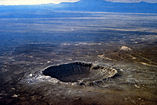

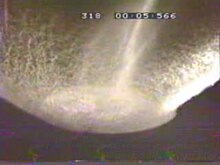
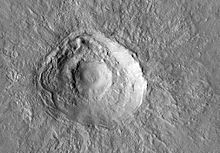

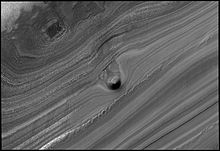

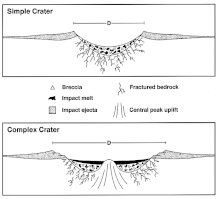
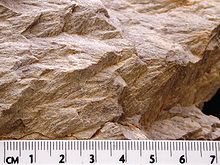
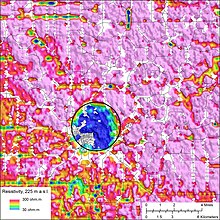
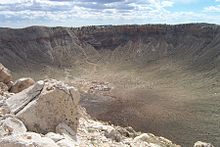
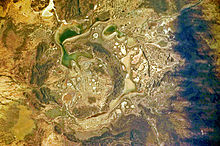
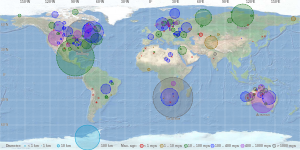
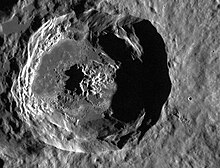
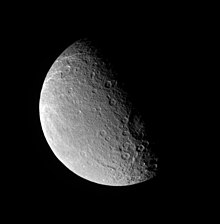
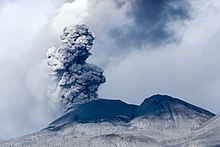


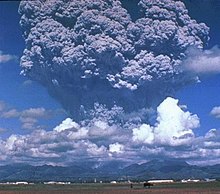
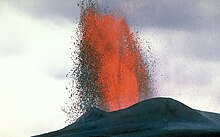


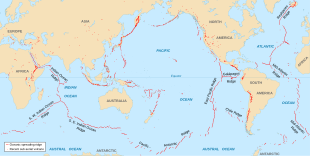

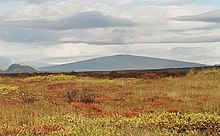






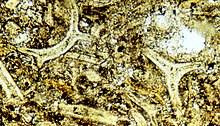

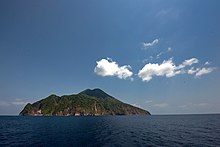
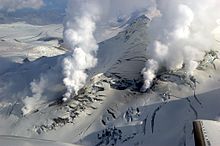
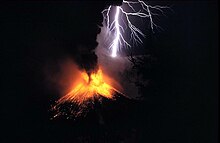
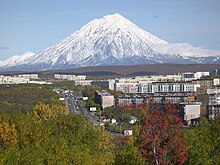
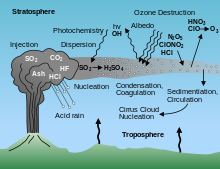

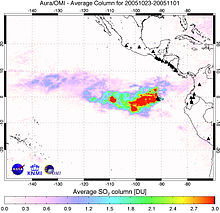

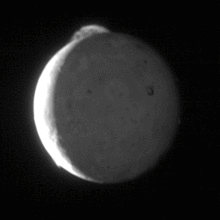
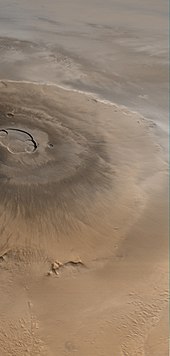









No comments:
Post a Comment